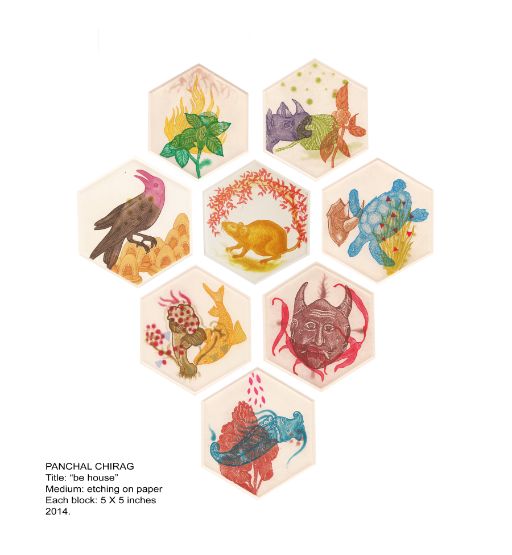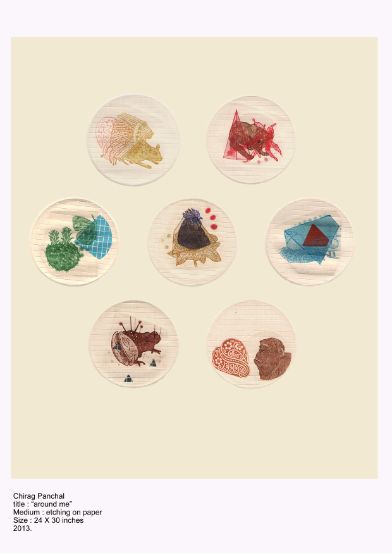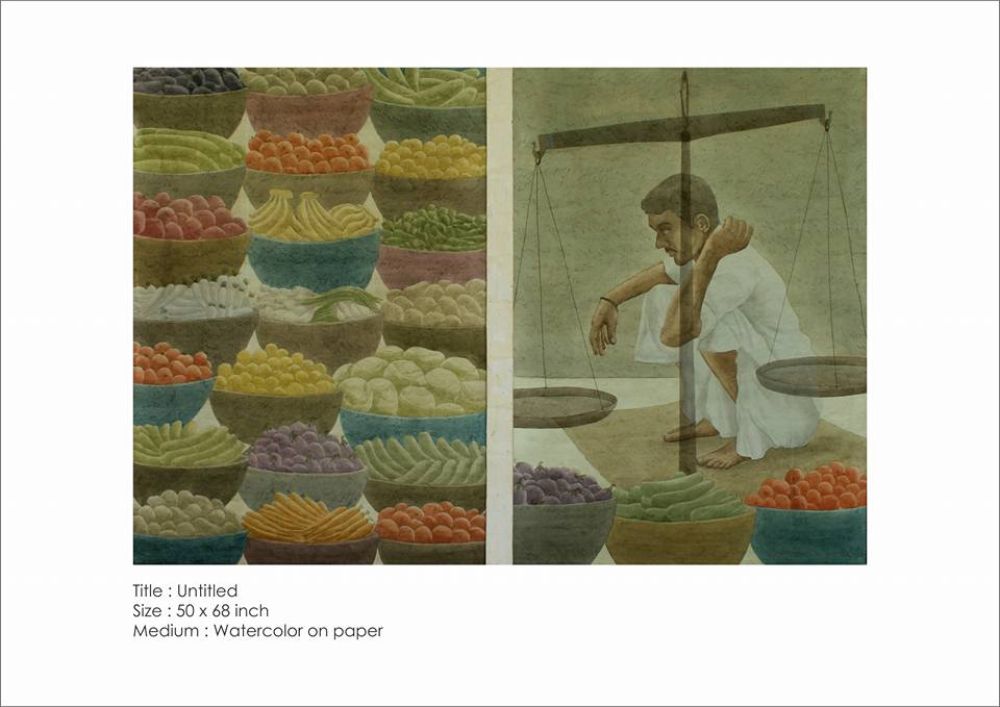The ‘common’ makes for conversation, adaptation, adjustments – a constant barter of thoughts, devices and languages in a space of coexistence – the common is an evolving space. This is not to say that it is devoid of any sense of friction, conflicts or arguments; rather it is supple with debates as one instigates an inquiry in one’s own practice in conjunction with the co-residents. These local artists from Gujarat have been engaged in Glocal narratives contemplating on scenes inspired from ones surrounding, yet applicable universally. These little conversations have become larger narratives to reaching out, conveying stories and hearing what you as the audience think to create dialogues that are otherwise rare in the complexities of artistic concepts. The artists use their rather mundane and documentary practices to understand this common ground that draws parallels to their practices, employing their recurrent themes aligned by several overlapping preoccupations – in the search of an identity, differentiating it from the seemingly identical.


Ajay Dhapa’s practice revolves around the metaphor of the dog. His earlier practice stood in the confines of the personal and has since evolved to open out to relatively generic public conversations. He reassigns himself as the mouthpiece for this conversation, where his work forms the introduction to the ensuing discussions. The earlier understanding of the ‘absence’ is now translated to the ‘absent’ public whom he tries to prod with his commentary. The Pariah dogs become an allegory to the public, reorienting them as ‘stray’ in thought and deed when they engage in activities such as pollution, contamination and defacing of public (common) spaces of recreation like the ‘chai ki kitli’ that Dhapa frequents on a daily basis to meet friends and spend time.


The correlations continue in the practice of Chirag Panchal, as he evidences nature in its flora and fauna – bringing together a childlike curiosity in their existence and significance. The tendency is to study their innate function within the wheel of the biosphere and the functions assigned to them by humans – like a symbol maybe, or a religious motif or a bearer of faith in the adversary of our times. He relies on an acute sense of theatre embedding his narratives to conduct recitals in light- hearted humour. Here is where he reintroduces the form to play as shapes as they shift towards becoming symbols – to be read as open-ended conversations that invite the viewer to contribute.

Gulab Kapadiya’s canvases are documents of labour constructed around a day in the life of the worker; or could it mean the every day in the life of the worker? The specific skill sets are explored as inspired practices around the subject and his/her objects, supplemented at times with little suggestive notations like weekly sheets, scribblings, metres and measurements etc. There is an attempt to render antiquity to derive their origin and history and place them in contemporaneity. The protagonists are set into motion as they go about their practices – the cobbler and the tailor, the barber and the baker, the locksmith, milkman etc –recreating regular scenes set in a constant environment of physical and mental exertion versus the deliverance of their creative commitments and their adaptive functions in the dilemma of the industrial world.
Himanshu Jamod, grew up around a ship wrecking yard and to him that was his wonderland – nonetheless one of mammoth scale. His fascination with ships and maritime histories evolved into his practice that inspects it both objectively and subjectively like the use of packaging material such as Tarpaulin as canvas. Smitten by a father associated with the industry and the fascination of sea travel still forms his childlike inquiry – his practice at that. Jamod spends months documenting the deconstruction of the vessel and the memories it has carried across sea miles throughout its life spanning decades, like he was the biographer of ‘he who had returned from exile’.
Images courtesy : Respective Artists
Yatra Archives

 How Tulika Books is creating impact in children’s lives through picture books
Nandini Varma
How Tulika Books is creating impact in children’s lives through picture books
Nandini VarmaAug 21, 2019
A children’s book about a boy who feels like a girl. And about a child brought up by grandfathers. These are some of the stories published by Tulika Books, who have been making children’s picture books since 23 years. Little…
 Dalgona Coffee: A worldwide social media trend about home-made café experience
Harshil Shah
Dalgona Coffee: A worldwide social media trend about home-made café experience
Harshil ShahApr 2, 2020
While the lockdown has ignited various trends on social media, one that has received a major global following is #DalgonaCoffee. With thousands of posts on its name, here’s all you need to know about the Dalgona Coffee wave. I first…
 Leonardo, Michelangelo, Raphael and Donatello—Artists or Teenage Mutant Ninja Turtles characters?
Harshil Shah
Leonardo, Michelangelo, Raphael and Donatello—Artists or Teenage Mutant Ninja Turtles characters?
Harshil ShahNov 5, 2019
Did you ever wonder where the Teenage Mutant Ninja Turtles’ characters got their names from? Well, your search is complete. Here is a brief introduction of the artists from whom the creators of TMNT took inspiration. Teenage mutant ninja turtles,…
 The call of the mountains: orthopaedic Dr Yatin Desai’s advice on trekking
Himanshu Nainani
The call of the mountains: orthopaedic Dr Yatin Desai’s advice on trekking
Himanshu NainaniMay 24, 2019
In this piece 64 year old Dr Yatin Desai, shares with CY his inspiring story of how to scale towering mountains with utmost ease and how this life adventure activity can shape human character and health. Chances are high that…




